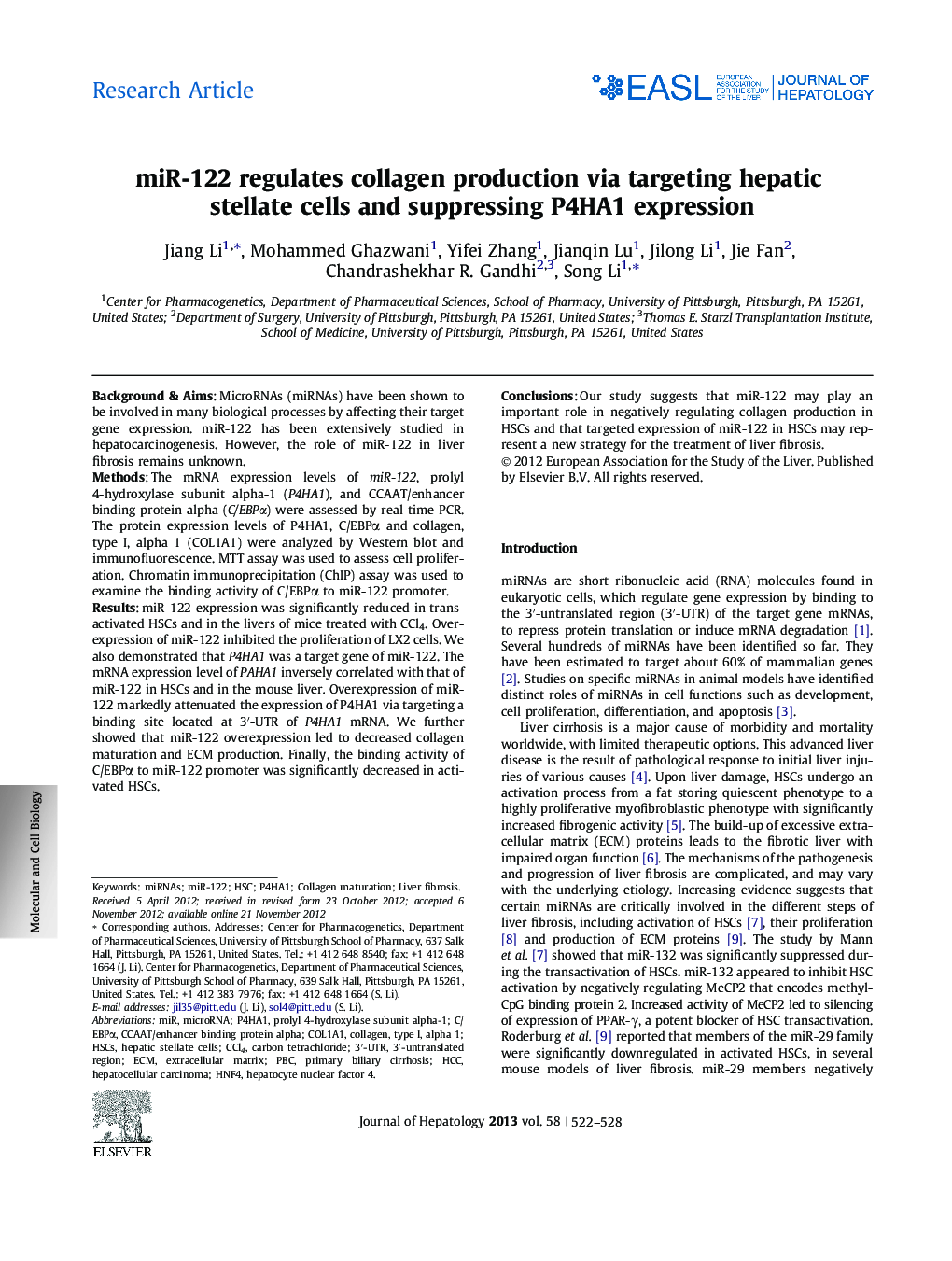| Article ID | Journal | Published Year | Pages | File Type |
|---|---|---|---|---|
| 6105701 | Journal of Hepatology | 2013 | 7 Pages |
Background & AimsMicroRNAs (miRNAs) have been shown to be involved in many biological processes by affecting their target gene expression. miR-122 has been extensively studied in hepatocarcinogenesis. However, the role of miR-122 in liver fibrosis remains unknown.MethodsThe mRNA expression levels of miR-122, prolyl 4-hydroxylase subunit alpha-1 (P4HA1), and CCAAT/enhancer binding protein alpha (C/EBPα) were assessed by real-time PCR. The protein expression levels of P4HA1, C/EBPα and collagen, type I, alpha 1 (COL1A1) were analyzed by Western blot and immunofluorescence. MTT assay was used to assess cell proliferation. Chromatin immunoprecipitation (ChIP) assay was used to examine the binding activity of C/EBPα to miR-122 promoter.ResultsmiR-122 expression was significantly reduced in transactivated HSCs and in the livers of mice treated with CCl4. Overexpression of miR-122 inhibited the proliferation of LX2 cells. We also demonstrated that P4HA1 was a target gene of miR-122. The mRNA expression level of PAHA1 inversely correlated with that of miR-122 in HSCs and in the mouse liver. Overexpression of miR-122 markedly attenuated the expression of P4HA1 via targeting a binding site located at 3â²-UTR of P4HA1 mRNA. We further showed that miR-122 overexpression led to decreased collagen maturation and ECM production. Finally, the binding activity of C/EBPα to miR-122 promoter was significantly decreased in activated HSCs.ConclusionsOur study suggests that miR-122 may play an important role in negatively regulating collagen production in HSCs and that targeted expression of miR-122 in HSCs may represent a new strategy for the treatment of liver fibrosis.
